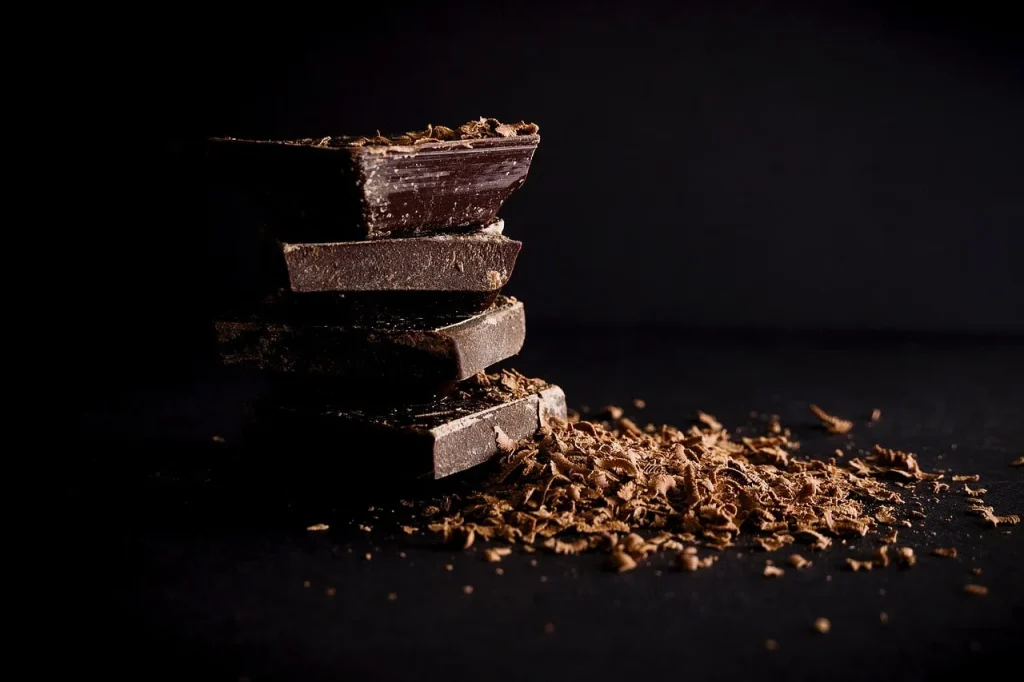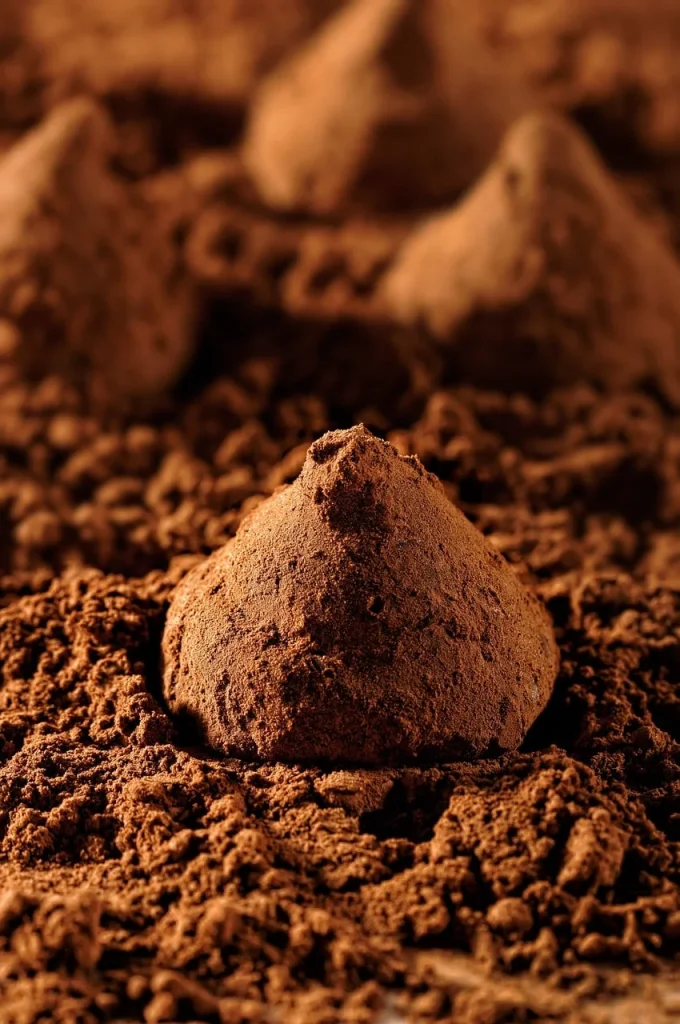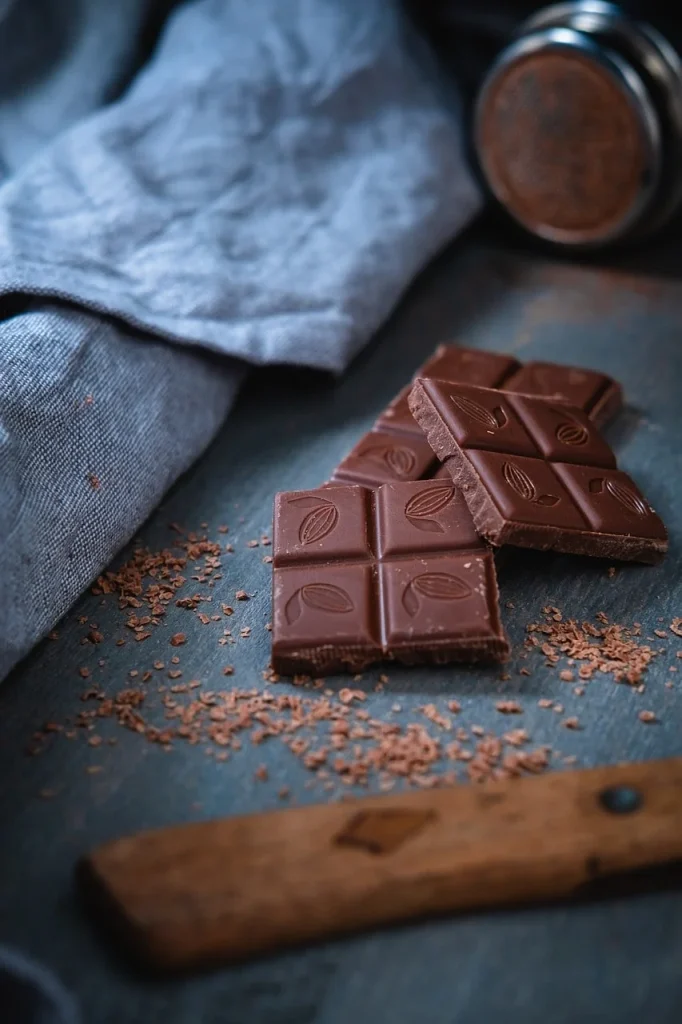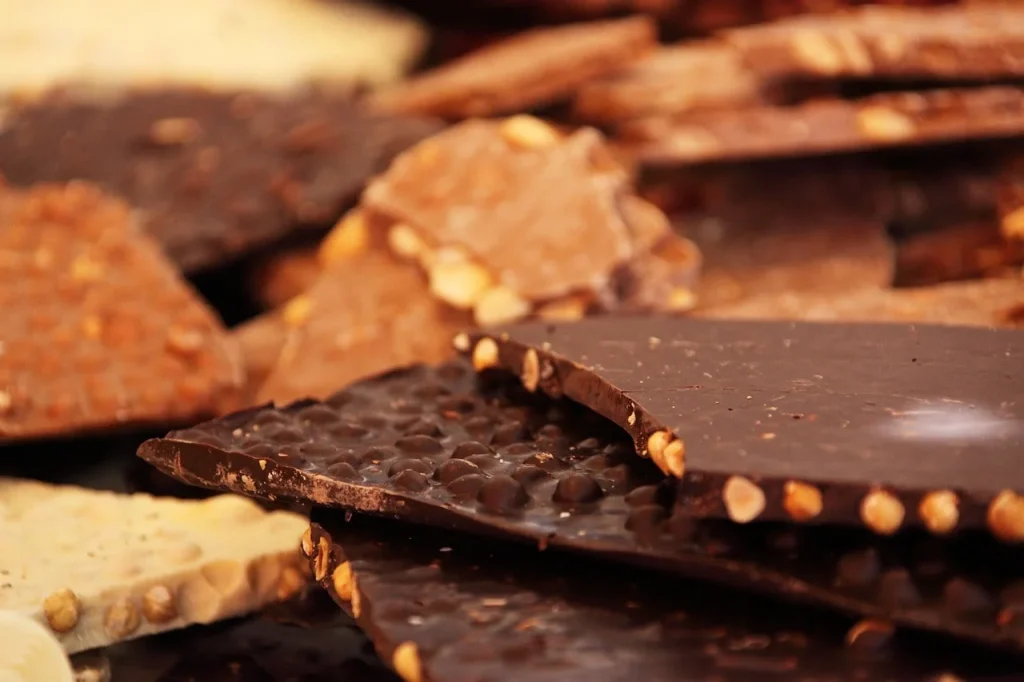Chocolate is a universal favorite, but there’s much more to it than meets the eye. This delightful treat has a history that dates back thousands of years and is full of intriguing facts. Did you know that chocolate was used as medicine in the past?
And who would have guessed that white chocolate isn’t technically chocolate at all? Whether you love it in bars, drinks, or desserts, chocolate has a lot of secrets waiting to be discovered. Are you ready to uncover the hidden stories behind your favorite sweet?
All you need is love. But a little chocolate now and then doesn’t hurt.
Charles M. Schulz
Chocolate Facts
Discover the sweet secrets of chocolate. Pay close attention, because there’s a quiz at the end to see if you’ve mastered the topic.
- The aroma of chocolate can increase theta brain waves, which trigger relaxation.
- The white variety is not technically chocolate, as it contains no cocoa solids or cocoa liquor.
- It takes approximately 400 cacao beans to make one pound (450 grams) of chocolate.
- The largest chocolate bar ever weighed just over 12,770 kilograms (28,160 lb).
- Cacao was once so valuable that the ancient Mayans used it as currency.
- The first chocolate bar was produced by J.S. Fry & Sons in England in 1847.
- Milk chocolate was invented by Daniel Peter, who experimented with milk powder in Switzerland in 1875.
- Chocolate has over 600 flavor compounds, while red wine has 200.
- Chocolate can be deadly to dogs and cats due to theobromine, a compound that humans easily metabolize.
- A single chocolate chip can give enough energy to an adult human to walk 150 feet.
- The smell of chocolate increases theta brain waves, which are deeply relaxing and meditative.
- Napoleon always carried chocolate with him, which he ate as a quick energy boost.
- The inventor of the chocolate chip cookie sold the idea to Nestle Toll House in return for a lifetime supply of chocolate.

- Until the 16th century, no European had ever heard of the popular beverage we now know as hot chocolate.
- M&M’s were created in 1941 as a means for soldiers to enjoy chocolate without it melting in their hands.
- Experiments show that melting chocolate in one’s mouth raised brain activity and heart rate more intensely than passionate kissing.
- The first machine-made chocolate was produced in Barcelona, Spain, in 1780.
- Chocolate milk is an effective post-workout recovery drink due to its high protein and carbohydrate content.
- The world’s largest chocolate-consuming country is Switzerland, with an average of 19.8 pounds of chocolate per person per year.
- In 2013, Belgium issued a limited edition of chocolate-scented postage stamps.
- Dark chocolate has been shown to improve blood flow to the brain and reduce the risk of stroke.
- Cocoa trees can live up to 200 years, but they produce marketable cocoa beans for only 25 years.
- The process of separating cocoa solids and cocoa butter is called conching, and it can last from a few hours to several days.
- Before the 1700s, chocolate was primarily enjoyed as a beverage.
- During the chocolate-making process, the beans must be fermented for up to seven days to develop their unique flavor.
- The scientific name for the cocoa tree, Theobroma cacao, means “food of the gods” in Greek.
- Researchers found that people are more likely to donate to charity when exposed to the scent of chocolate.
- Chocolate producers worldwide consume approximately 40% of the world’s almonds and 20% of the world’s peanuts.

- During WWII, the U.S. government commissioned the production of a high-energy, heat-resistant chocolate bar.
- Ruby chocolate is the newest variety, first made in 2017 by Swiss company Barry Callebaut, characterized by its natural pink color and berry flavor.
- Some studies suggest that dark chocolate can enhance cognitive function and improve symptoms of depression.
- The cocoa bean naturally contains almost 50% cocoa butter, a highly valuable fat.
- Caffeine in chocolate is sufficient to boost memory, but not enough to keep you awake at night.
- Italian researchers found that eating chocolate increases insulin sensitivity, which could reduce the risk of diabetes.
- The higher the cocoa content, the more health benefits associated, especially in terms of heart disease prevention.
- In Aztec culture, cacao beans were considered more valuable than gold dust due to their use as currency.
- Gianduja, a sweet chocolate containing about 30% hazelnut paste, was developed in Turin, Italy during Napoleon’s regency.
- A typical cocoa tree produces approximately 2,500 beans, enough to make about 2 pounds of chocolate.

- The film “Willy Wonka & the Chocolate Factory” was financed by Quaker Oats to promote their new Wonka Bar candy.
- European laws require minimum cocoa levels in products labeled as chocolate.
- Chocolate contains phenylethylamine (PEA), a natural substance that is reputed to stimulate the same reaction in the body as falling in love.
- Artisanal chocolate makers often use old machines to preserve the traditional flavors of chocolate.
- The most expensive chocolate in the world is made by To’ak in Ecuador. It’s aged for four years inside a French oak cask.
- Climate change poses a significant threat to the future of cocoa production, potentially affecting flavor and price.
- Chocolate was once used medicinally to treat ailments such as stomach diseases.
- Some cacao trees are more than 100 years old but still produce fruit annually.
- A recent trend in chocolate production is to focus on bean-to-bar processes, enhancing flavor authenticity and ethical sourcing.
- Japanese Kit Kats are available in over 300 flavors, including green tea, wasabi, and sake as a reflection of local taste preferences.
- In some boutique chocolate shops, you can find chocolate-infused cheeses, combining two beloved flavors in unexpected ways.
- Historically, cacao beans were deemed so precious that pirates mistook them for animal droppings and threw them overboard, not realizing their true value.
Chocolate Myths

Now that we’ve explored the facts, let’s clear up some misconceptions. In the next section, we’ll separate the myths from the truth about chocolate.
- Chocolate Causes Acne
It has often been claimed that consuming chocolate can cause acne. However, no scientific evidence directly links chocolate consumption to the increase of acne. The development of acne is primarily influenced by hormones and genetics, not by diet alone. - White Chocolate is True Chocolate
Although commonly grouped with dark and milk varieties, white chocolate lacks cocoa solids, which are essential components of true chocolate. Instead, it is made from cocoa butter, sugar, and milk, giving it a different composition and flavor profile. - Chocolate is High in Caffeine
It is widely believed that it contains high levels of caffeine. In fact, chocolate contains relatively small amounts of caffeine. For example, a typical dark chocolate bar has less caffeine than a standard cup of decaffeinated coffee. - Chocolate Lacks Nutritional Value
Contrary to common perception, chocolate, especially dark chocolate, is rich in antioxidants and minerals. It is recognized for containing magnesium, iron, and flavonoids, which are known to support heart health and reduce inflammation. - Chocolate is Bad for Your Heart
Some assume that all forms of chocolate are detrimental to heart health. However, moderate consumption of dark chocolate has been associated with a reduced risk of heart disease. This benefit is attributed to the presence of heart-healthy antioxidants called flavonoids.
No products found.
Chocolate Quotes

Let’s discover the world of chocolate through the words of those who have been enthralled by its magic.
Chocolate is the first luxury. It has so many things wrapped up in it: Deliciousness in the moment, childhood memories, and that grin-inducing feeling of getting a reward for being good.
Mariska Hargitay
Hargitay emphasizes chocolate’s multifaceted appeal, combining taste, nostalgia, and a sense of reward.
Biochemically, love is just like eating large amounts of chocolate.
John Milton
Milton draws a playful parallel between the feelings of love and the pleasure derived from consuming chocolate.
Nine out of ten people like chocolate. The tenth person always lies.
John Q. Tullius
Tullius humorously asserts the nearly universal love for chocolate, implying that everyone enjoys it.
After about 20 years of marriage, I’m finally starting to scratch the surface of what women want. And I think the answer lies somewhere between conversation and chocolate.
Mel Gibson
Gibson humorously suggests that chocolate is a key to understanding what women desire, along with meaningful conversation.
There’s nothing better than a good friend, except a good friend with chocolate.
Linda Grayson
Grayson humorously conveys that the joy of friendship is enhanced when shared with chocolate.
Chocolate FAQ

Moving forward from those sweet quotes, we approach the FAQ section. Read each point carefully, as they will be crucial for the upcoming quiz.
- Can chocolate kill dogs?
Yes, it can be very dangerous for dogs. It contains theobromine, a substance similar to caffeine, which is toxic to them in sufficient quantities. Always keep chocolate out of reach of your furry friends. - Where was chocolate invented?
Chocolate, as we know it, began in the regions of Central America. It was first used by the ancient Mayans and later by the Aztecs, primarily as a beverage. - Can chocolate cause heartburn?
Indeed, it can cause heartburn for some people. It relaxes the lower esophageal sphincter, which can allow stomach acid to creep up into the esophagus, leading to that uncomfortable burning sensation. - Will chocolate melt in the mail?
It can definitely melt in the mail, especially if it’s being shipped to or through hot climates. If you’re sending chocolate by mail, consider using insulated packaging and ice packs to help keep it cool. - Which chocolate melts fastest?
Milk chocolate melts the fastest among the varieties because it has a lower melting point due to its higher fat and sugar content compared to dark chocolate. White chocolate also melts quickly for similar reasons.
No products found.
Chocolate Trivia

Welcome to the Ultimate Chocolate Quiz! If you don’t get any answers right, beware, your chocolate privileges might be revoked for a week!
Conclusion
To sum up, our exploration of chocolate reveals it as a powerhouse of pleasure and health benefits. Its journey from the pods of the cacao tree to our kitchens is a testament to its enduring appeal.
Whether it’s lifting your spirits or satisfying your sweet tooth, chocolate does it all with flair. Cherish every chocolate moment and remember its storied past. Till next time, stay curious and explore more. Cheers.
4 Sources Used For This ArticleHistory Of Chocolate – Study Queries
Chocolate Quotes and Jokes – Facts About Chocolate
Chocolate Melting Point Guide – Webstaurant Store



1 Comment
Hello,
Hope you are doing well. I think your business deserves more exposure.
We’re currently offering a free article on Benzinga, which gets more than 14M+ visitors—a great way to build trust for your company and increase exposure at no cost.
In addition, for only $297, we’ll publish your brand on affiliates of FOX, NBC, CBS, ABC, and over 300 other media outlets. Think of the exposure your brand could gain!
This deal is limited to the first 10 people who reply, so if you’d like to take advantage of your free Benzinga article, simply reply with “”YES, I would like to be featured in Benzinga!””
I’d be happy to help your brand get the exposure it deserves.
Best,
Jonathan
PR Boost
In case you wish to stop getting messages from me anymore, just reply back to this message with the phrase: “No, thank you”.